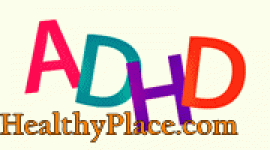Common ADHD Myths and Facts

The following ADHD myths and factual responses have been collected from rebuttals to media articles about ADHD.
Myth #1: ADHD is a "phantom disorder".
FACT: The existence of a neurobiological disorder is not an issue to be decided by the media through public debate, but rather as a matter of scientific research. Scientific studies spanning 95 years summarized in the professional writings of Dr. Russell Barkley, Dr. Sam Goldstein, and others have consistently identified a group of individuals who have trouble with concentration, impulse control, and in some cases, hyperactivity. Although the name given to this group of individuals, our understanding of them, and the estimated prevalence of this group has changed a number of times over the past six decades, the symptoms have consistently been found to cluster together. Currently called Attention Deficit Hyperactivity Disorder, this syndrome has been recognized as a disability by the courts, the United States Department of Education, the Office for Civil Rights, the United States Congress, the National Institutes of Health, and all major professional medical, psychiatric, psychological, and educational associations.
Myth #2: Ritalin is like cocaine, and the failure to give youngsters drug holidays from Ritalin causes them to develop psychosis.
FACT: Methylphenidate (Ritalin) is a medically prescribed stimulant medication that is chemically different from cocaine. The therapeutic use of methylphenidate does NOT CAUSE addiction or dependence, and does not lead to psychosis. Some children have such severe ADD symptoms that it can be dangerous for them to have a medication holiday, for example a child who is so hyper and impulsive he'll run into traffic withoug stopping to look first. Hallucinations are an extremely rare side-effect of methylphenidate, and their occurrence has nothing to do with the presence or absence of medication holidays. Individuals with ADHD who are properly treated with stimulant medication such as Ritalin have a lower risk of developing problems with alcohol and other drugs than the general population. More importantly, fifty years of research has repeatedly shown that children, adolescents, and adults with ADHD safely benefit from treatment with methylphenidate.
Myth #3: No study has ever demonstrated that taking stimulant medications can cause any lasting behavioral or educational benefit to ADHD children.
FACT: Research has repeatedly shown that children, adolescents, and adults with ADHD benefit from therapeutic treatment with stimulant medications, which has been used safely and studied for more than 50 years. For example, The New York Times reviewed a recent study from Sweden showing positive long- term effects of stimulant medication therapy on children with ADHD. Readers interested in more studies on the effectiveness of ADHD medication should consult the professional writings of Dr. Russell Barkley, Drs. Gabrielle Weiss and Lily Hechtman, and Dr. Joseph Biederman.
Myth #4: ADHD kids are learning to make excuses, rather than take responsibility for their actions.
FACT: Therapists, educators, and physicians routinely teach children that ADHD is a challenge, not an excuse. Medication corrects their underlying chemical imbalance, giving them a fair chance of facing the challenges of growing up to become productive citizens. Accommodations for the disabled, as mandated by federal and state laws, are not ways of excusing them from meeting society's responsibilities, but rather make it possible for them to compete on a leveled playing field.
Myth #5: ADHD is basically due to bad parenting and lack of discipline, and all that ADHD children really need is old-fashioned discipline, not any of these phony therapies.
FACT: There are still some parent-bashers around who believe the century-old anachronism that child misbehavior is always a moral problem of the "bad child." Under this model, the treatment has been to "beat the Devil out of the child." Fortunately, most of us are more enlightened today. A body of family interaction research conducted by Dr. Russell Barkley and others has unequivocally demonstrated that simply providing more discipline without any other interventions worsens rather than improves the behavior of children with ADHD. One can't make a paraplegic walk by applying discipline. Similarly, one can't make a child with a biologically-based lack of self-control act better by simply applying discipline alone.
Myth #6: Ritalin is unsafe, causing serious weight loss, mood swings, Tourette's syndrome, and sudden, unexplained deaths.
FACT: Research has repeatedly shown that children, adolescents, and adults with ADHD benefit from treatment with Ritalin (also known as methylphenidate), which has been safely used for approximately 50 years. There are NO published cases of deaths from overdoses of Ritalin; if you take too much Ritalin, you will feel terrible and act strange for a few hours, but you will not die. This cannot be said about many other medications. The unexplained deaths cited in some articles are from a combination of Ritalin and other drugs, not from Ritalin alone. Further investigation of those cases has revealed that most of the children had unusual medical problems which contributed to their deaths. It is true that many children experience appetite loss, and some moodiness or "rebound effect" when Ritalin wears off. A very small number of children may show some temporary tics, but these do not become permanent. Ritalin does not permanently alter growth, and usually does not result in weight loss. Ritalin does not cause Tourette's syndrome, rather many youngsters with Tourette's also have ADHD. In some cases, Ritalin even leads to an improvement of the of tics in children who have ADHD and Tourette's.
Myth #7: Teachers around the country routinely push pills on any students who are even a little inattentive or overactive.
FACT: Teachers are well-meaning individuals who have the best interests of their students in mind. When they see students who are struggling to pay attention and concentrate, it is their responsibility to bring this to parents' attention, so parents can take appropriate action. The majority of teachers do not simply push pills- they provide information so that parents can seek out appropriate diagnostic help. We do agree with the position that teachers should not diagnose ADHD. However, being on the front lines with children, they collect information, raise the suspicion of ADHD, and bring the information to the attention of parents, who then need to have a full evaluation conducted outside the school. The symptoms of ADHD must be present in school and at home before a diagnosis is made; teachers do not have access to sufficient information about the child's functioning to make a diagnosis of ADHD or for that matter to make any kind of medical diagnosis.
Myth #8: Efforts by teachers to help children who have attention problems can make more of a difference than medications such as Ritalin.
FACT: It would be nice if this were true, but recent scientific evidence from the multi-modal treatment trials sponsored by the National Institute of Mental Health suggests it is a myth. In these studies, stimulant medication alone was compared to stimulant medication plus a multi-modal psychological and educational treatment, as treatments for children with ADHD. The scientists found that the multi-modal treatment plus the medication was not much better than the medication alone. Teachers and therapists need to continue to do everything they can to help individuals with ADHD, but we need to realize that if we don't also alter the biological factors that affect ADHD, we won't see much change.
Myth #9: CH.A.D.D. is supported by drug companies, and along with many professionals, are simply in this field to make a quick buck on ADHD.
FACT: Thousands of parents and professionals volunteer countless hours daily to over 600 chapters of CH.A.D.D. around the U.S. and Canada on behalf of individuals with ADHD. CH.A.D.D. is very open about disclosing any contributions from drug companies. These contributions only support the organization's national conference, which consists of a series of educational presentations, 95% of which are on topics other than medications. None of the local chapters receive any of this money. It is a disgrace to impugn the honesty and efforts of all of these dedicated volunteers. CH.A.D.D. supports all known effective treatments for ADHD, including medication, and takes positions against unproven and costly remedies.
Myth #10: It is not possible to accurately diagnose ADD or ADHD in children or adults.
FACT: Although scientists have not yet developed a single medical test for diagnosing ADHD, clear-cut clinical diagnostic criteria have been developed, researched, and refined over several decades. The current generally accepted diagnostic criteria for ADHD are listed in the Diagnostic and Statistical Manual of Mental Disorders (DSM-IV) published by the American Psychiatric Association (1995). Using these criteria and multiple methods to collect comprehensive information from multiple informants, ADHD can be reliably diagnosed in children and adults.
Myth #11: Children outgrow ADD or ADHD.
FACT: ADHD is not found just in children. We have learned from a number of excellent follow-up studies conducted over the past few decades that ADHD often lasts a lifetime. Over 70% of children diagnosed as having ADHD will continue to manifest the full clinical syndrome in adolescence, and 15-50% will continue to manifest the full clinical syndrome in adulthood. If untreated, individuals with ADHD may develop a variety of secondary problems as they move through life, including depression, anxiety, substance abuse, academic failure, vocational problems, marital discord, and emotional distress. If properly treated, most individuals with ADHD live productive lives and cope reasonably well with their symptoms.
Myth #12: Methylphenidate prescriptions in the U.S. have increased 600%.
FACT: The production quotas for methylphenidate increased 6-fold; however that DEA production quota is a gross estimate based on a number of factors, including FDA estimates of need, drug inventories at hand, EXPORTS, and industry sales expectations. One cannot conclude that a 6-fold increase in production quotas translates to a 6-fold increase in the use of methylphenidate among U.S. children any more than one should conclude that Americans eat 6 times more bread because U.S. wheat production increased 6-fold even though much of the grain is stored for future use and export to countries that have no wheat production. Further, of the approximately 3.5 million children who meet the criteria for ADHD, only about 50% of them are diagnosed and have stimulant medication included in their treatment plan. The estimated number of children taking methylphenidate for ADD suggested in some media stories fails to note that methylphenidate is also prescribed for adults who have ADHD, people with narcolepsy, and geriatric patients who receive considerable benefit from it for certain conditions associated with old age such as memory functioning. (see Pediatrics, December 1996, Vol. 98, No. 6)
Common Myths About ADHD
From a UK Perspective: With thanks to Michelle Richardson (ADHD Nurse), Ryegate Children's Centre.
Myth:
Children naturally outgrow ADHD.
Fact:
In some children, the overactive behavior of ADHD decreases during the teen years. But inattention often becomes more challenging during early high school years when students must organize homework assignments and complete complex projects. Some children do not experience any symptoms of ADHD in adulthood, while some experience fewer symptoms. Others have no change in their symptoms from childhood to adulthood.
Myth:
ADHD is caused by too much white sugar, preservatives, and other artificial food additives. Removing these things from a child's diet can cure the disorder.
Fact:
Studies have shown that very few children with ADHD are helped by special diets. Most of the children who do respond to diets are very young or have food allergies. Sugar and food additives have been ruled out as causes for ADHD.
Myth:
Poor parenting is responsible for ADHD behaviors in children.
Fact:
ADHD is a physical disorder caused by differences in how the child's brain works. Anxiety-producing factors, such as family conflicts or disruptions, can aggravate the disorder, but they do not cause it.
Common Myths About ADHD Stimulant Medications
Myth:
Children treated with stimulant medications will become addicted or will be more likely to abuse other drugs.
Fact:
Stimulant medications are not addictive when used as directed. Studies have shown adequate treatment of ADHD may reduce the risk of substance abuse.
Myth:
Children must be taken off stimulant medications by the time they become teenagers.
Fact:
About 80% of children who need medications will need them as teenagers.
Myth:
Stimulant medications stunt growth.
Fact:
While stimulant medications may cause an initial, mild slowing of growth, this effect is temporary. Children treated with ADHD stimulant medications ultimately reach their normal height.
Myth:
Children build up a tolerance to stimulant medication. They end up needing more and more of it.
Fact:
While your child's medication may need to be adjusted occasionally, there's no evidence that children become tolerant to medication or require more of it to be effective.
Other contributors to this article: Becky Booth, Wilma Fellman, LPC, Judy Greenbaum, Ph.D., Terry Matlen, ACSW, Geraldine Markel, Ph.D., Howard Morris, Arthur L. Robin, Ph.D., Angela Tzelepis, Ph.D.
APA Reference
Staff, H.
(2007, November 8). Common ADHD Myths and Facts, HealthyPlace. Retrieved
on 2025, November 24 from https://www.healthyplace.com/adhd/articles/common-adhd-myths-and-facts

